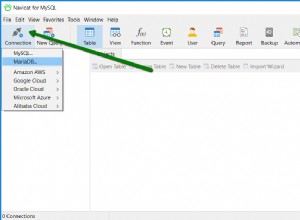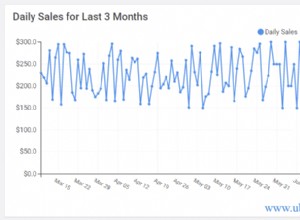Ho avuto un problema simile ed è così che l'ho fatto.
TL;DR:Dovrai usare Apache Tika
per analizzare i file DBase. Converte il contenuto in una tabella XHTML e lo restituisce come java.lang.String , che puoi analizzare tramite un parser DOM o SAX per ottenere i dati nel formato che ti serve. Ecco alcuni esempi:https://tika.apache.org/1.20/examples.html
Per iniziare, aggiungi la seguente dipendenza Maven al tuo POM:
<dependency>
<groupId>org.apache.tika</groupId>
<artifactId>tika-parsers</artifactId>
<version>1.21</version>
</dependency>
Quindi inizializza il parser:
Parser parser = new DBFParser(); //Alternatively, you can use AutoDetectParser
ContentHandler handler = new BodyContentHandler(new ToXMLContentHandler()); //This is tells the parser to produce an XHTML as an output.
parser.parse(dbaseInputStream, handler, new Metadata(), new ParseContext()); // Here, dbaseInputStream is a FileInputStream object for the DBase file.
String dbaseAsXhtml = handler.toString(); //This will have the content in XHTML format
Ora, per convertire i dati in un formato più conveniente (in questo caso CSV), ho fatto quanto segue:
Innanzitutto, converti l'intera stringa in un oggetto DOM:
DocumentBuilder builder = DocumentBuilderFactory.newInstance().newDocumentBuilder();
Document xhtmlDoc= builder.parse(new InputSource(new StringReader(xmlString.trim().replaceAll("\t", "")))); //I'm trimming out the tabs and whitespaces here, so that I don't have to dealt with them later
Ora, per ottenere le intestazioni:
XPath xPath = XPathFactory.newInstance().newXPath();
NodeList tableHeader = (NodeList)xPath.evaluate("//table/thead/th", xhtmlDoc, XPathConstants.NODESET);
String [] headers = new String[tableHeader.getLength()];
for(int i = 0; i < tableHeader.getLength(); i++) {
headers[i] = tableHeader.item(i).getTextContent();
}
Poi i record:
XPath xPath = XPathFactory.newInstance().newXPath();
NodeList tableRecords = (NodeList)xPath.evaluate("//table/tbody/tr", xhtmlDoc, XPathConstants.NODESET);
List<String[]> records = new ArrayList<String[]>(tableRecords.getLength());
for(int i = 0; i < tableRecords.getLength(); i++) {
NodeList recordNodes = tableRecords.item(i).getChildNodes();
String[] record = new String[recordNodes.getLength()];
for(int j = 0; j < recordNodes.getLength(); j++)
record[j] = recordNodes.item(j).getTextContent();
records.add(record);
}
Infine, li mettiamo insieme per formare un CSV:
StringBuilder dbaseCsvStringBuilder = new StringBuilder(String.join(",", headers) + "\n");
for(String[] record : records)
dbaseCsvStringBuilder.append(String.join(",", record) + "\n");
String csvString = dbaseCsvStringBuilder.toString();
Ecco il codice sorgente completo:https://github.com/Debojit/DbaseTranslater/blob/master/src/main/java/nom/side/poc/file/dbf/DbaseReader.java




